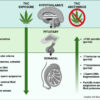Approximately one billion people are infected with influenza around the world each year, with more than half a million deaths estimated to result from the disease. Despite the disease’s potential severity, especially among older populations and those with cardiometabolic risk factors, approximately 30 percent of U.S. adults over age 65 were not vaccinated during the 2019-2020 flu season.
To evaluate best strategies for increasing vaccination rates, researchers from Brigham and Women’s Hospital, a founding member of the Mass General Brigham healthcare system, collaborated with Danish researchers to develop and implement a nationwide trial in Denmark testing nine different electronic messaging tactics among adults over age 65.
Their findings, published in The Lancet, identify two types of electronic letters that resulted in modest but statistically significant increases in vaccination rates, especially among patients who had not received the flu vaccine the previous year.
“This was a first-of-its-kind nationwide implementation trial to help address the very topical issue of overcoming vaccine hesitancy at a national level,” said co-author Muthiah Vaduganathan, MD, MPH, of the Division of Cardiovascular Medicine. “Electronic letters are a low-cost intervention that can reach across a population and have meaningful implications. Our efforts show that mass communication systems are feasible and can be rigorously tested, and we believe similar models should be tested in the US and other countries as well.”
In particular, the trial found that emphasizing the potential cardiovascular benefits of vaccination and a repeat-letter strategy with a 14-day follow-up letter resulted in 0.89 percent and 0.73 percent increases in vaccinations, respectively, compared with a usual-care group. The usual-care group received a letter typically sent by the Danish Health Authority under Denmark’s universal health system, which provides free influenza vaccines.
Notably, those without influenza vaccination in the prior season had a 2.46 percent absolute increase in vaccine uptake with the cardiovascular-themed letter, highlighting that this messaging strategy could be an effective intervention in a vaccine-hesitant group.
Vaduganathan, as co-director of the Brigham’s Center for Cardiometabolic Implementation Science, worked with other Brigham researchers, investigators at the University of Copenhagen and others to design the study’s electronic messages according to behavioral science principles.
During the 2022-2023 influenza season, the study team worked directly with the Danish Health Data Authority and Statens Serum Institute, the Danish authority responsible for infectious disease preparedness, to implement the trial, called the Nationwide Utilization of Danish Government Electronic Letter System for Increasing InFLUenza Vaccine Uptake (NUDGE-FLU) trial.
“Even small increases in influenza vaccination rates may have important public health implications when applied at a population level, including prevention of numerous deaths, hospitalizations and illnesses,” said first author and coordinating investigator Niklas Dyrby Johansen, MD, of the Center for Translational Cardiology and Pragmatic Randomized Trials at the University of Copenhagen.
While the observed improvement in vaccine uptake was slight, its potential impact is high while being extremely low-cost. According to U.S. Centers for Disease Control and Prevention data, a 0.89 percent absolute increase in vaccination rate could prevent 7,849 illnesses, 4,395 medical visits, 714 hospitalizations, and 66 deaths each year in the U.S. If 112 electronic letters are needed to encourage one additional vaccine, the cost of encouraging each additional vaccine is less than five dollars.
Of note, important differences between Denmark’s universal health system and the U.S. health system may limit the translation of these results. At baseline, Denmark’s vaccination rates in adults over 65 are approximately 75 percent, higher than in the U.S., and attitudes toward vaccination may differ. Additionally, the U.S. does not have a centralized communication platform analogous to the one used by the Danish government for priority notifications.
However, the authors note that a large proportion of the U.S. population could be reached with text-message platforms typically used to alert populations of local emergencies, as well as messages deployed by large insurers to their covered populations.
“NUDGE-FLU underscored the feasibility of conducting large-scale nationwide implementation trials in the universal Danish health system,” said chief investigator and senior author Professor Tor Biering-Sørensen, MD, MSc, MPH, Ph.D., of the Center for Translational Cardiology and Pragmatic Randomized Trials at the University of Copenhagen. “Hopefully, this will set the stage for future NUDGE trials in other patient populations.”
More information:
Niklas Dyrby Johansen et al, Electronic nudges to increase influenza vaccination uptake in Denmark: a nationwide, pragmatic, registry-based, randomised implementation trial, The Lancet (2023). DOI: 10.1016/S0140-6736(23)00349-5
Provided by
Brigham and Women’s Hospital
Citation:
Electronic messages shown to improve influenza vaccination rates in nationwide Danish study (2023, March 6)


